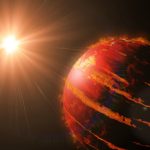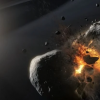Trio of ‘failed stars’ may reveal one of the Universe’s speed limits0
- From Around the Web, Space
- April 9, 2021
What this Canadian-led study found was far too remarkable to simply be a coincidence.

What this Canadian-led study found was far too remarkable to simply be a coincidence.

Astronomers are looking for the bones of dead planets inside the corpses of dead stars — and they may have just found some.

By monitoring the cosmos with a radio telescope array, an international team of scientists has detected radio bursts emanating from the constellation Boötes — that could be the first radio emission collected from a planet beyond our solar system.

Astronomers using data from NASA’s Transiting Exoplanet Survey Satellite (TESS) have discovered two exoplanets transiting inactive red dwarf stars TOI-122 and TOI-237.

Single exoplanets with wild orbits hint at a chaotic past

There are at least 300 million habitable planets in the Milky Way, new NASA research has shown – hinting that it’s less likely that humanity is alone in the universe.

The scientists used computer simulations to predict conditions

According to new research using data from NASA’s retired planet-hunting mission, the Kepler space telescope, about half the stars similar in temperature to our Sun could have a rocky planet capable of supporting liquid water on its surface.

Astronomers have discovered a planetary free agent floating through the Milky Way, unbound to the gravity of any nearby stars. The discovery, detailed Thursday in Astrophysical Journal Letters, suggests the Milky Way may be teeming with rogue planets.

Earth could be visible to alien civilisations on planets outside our solar system, scientists have found.



